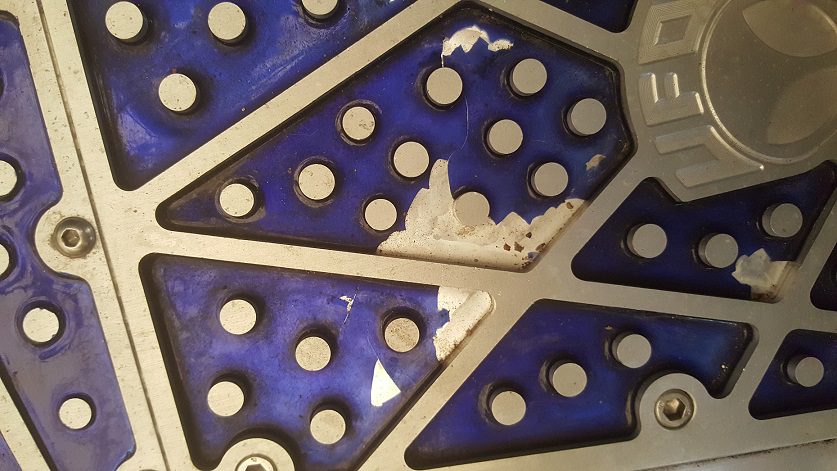Tagged: resin-troubleshooting
- This topic has 3 replies, 2 voices, and was last updated 7 years, 8 months ago by
Katherine Swift.
-
AuthorPosts
-
-
May 15, 2016 at 9:04 pm #5605
Katherine Swift
Keymaster -
May 15, 2016 at 9:10 pm #5608
Katherine Swift
KeymasterHi Matt,
Unfortunately, there isn’t going to be an easy fix to this. As I see it, you have two options:
1. You can try to pour more resin into the blank spaces to fill the void. It is going to be almost impossible to get the exact color match. Plus, without knowing why the resin is falling out to begin with, more may fall out. If you are going to try to repair it, I would suggest coloring your resin with a transparent blue colorant. Start by mixing it a lot lighter than you think you will need it. It will darken up a lot once you put it in the vessel because there won’t be any light passing through it to make it look lighter.
2. You can try to remove the rest of the resin. Once you do that, use something to sand down the surface of the aluminum. I’m wondering if there was some kind of coating on the metal (much like a mold release) that is keeping the resin from sticking. Same rules about making the color in point #1 applies, but at least you won’t have to drive yourself crazy about getting an exact match.
-
September 1, 2016 at 5:21 pm #6418
D Springer
GuestHey, this is old, but thought I’d chip in with some of the info I can contribute about the process and material.
The aluminum is SORTA finished, raw AL has a chemical conversion on it for stabilization purposes, but it doesn’t actual qualify as a finish (it’s still considered raw aluminum, whereas a chem film or a conversion coat qualify as finished). From the mild gold look to it, it MAY have an alodine coating which is a chemical conversion process that changes the surface so that it’s more resistant to chemical/salt/etc. Soooooo with that said, at the relatively micro level, you have a super smooth surface, with or without an additional coating that resists chemicals, and you apply resin ontop. Basically what you have is a sheet of resin completely floating ontop of the material, not attached to it in any way. No absorption into the material, no grip into a rough surface (it’s machined smooth I can see that), basically nothing to actually hold it. Additionally resin has a tendency to shrink, amount depending on the resin, which will pull it away from the edges and make it even more brittle at edges.
So the underlying issue is that you have the entire resin pour as a sheet ontop of the “slick” material, so the only structural support it has is the resin around it, so edges are going to be weak and thin is more prone to issues than thick. The best analogy I can make is taking a couple of drinking glasses, putting them on a brand new Teflon cookie sheet, filling the cookie sheet with water and freezing it all. The pan is basically a container for the ice, but really is not attached to the ice at all. The ice will hold itself together, at various degrees of effectivity depending on ice thickness, and the glasses sorta help hold it all together, but in the end you have a sheet of ice independent of the tray. Plus ice shrinks so it pulls away from the edges so there will be a touch of gap at the edges of the ice sheet to the tray, but the glasses won’t allow it to move. So this is the brittle edge, basically a really long “shelf”
So how to solve this problem… that’s a different issue entirely. I believe the easiest way is to take a blast cabinet or some other material and “rough” the surface as much as possible. Problem is, that while a blast cabinet will rough it up, it’ll also be sanding so it ends up being a bumpier, yet smoothed surface. So you can do that, or attempt to rough sand the interior frame so the resin has something to grab onto. I guess you could attempt to do multiple pours and try to “wedge” the “ice” into the tray by using the first pour as a mold to try to build off of. I dunno, this is getting long and it’s probably OBE already, good luck! D
-
September 1, 2016 at 6:29 pm #6421
Katherine Swift
KeymasterThanks for the insight. Aluminum is not something I have worked with much and your comments are very helpful!
-
-
-
AuthorPosts
- The topic ‘Trying to repair resin’ is closed to new replies.


